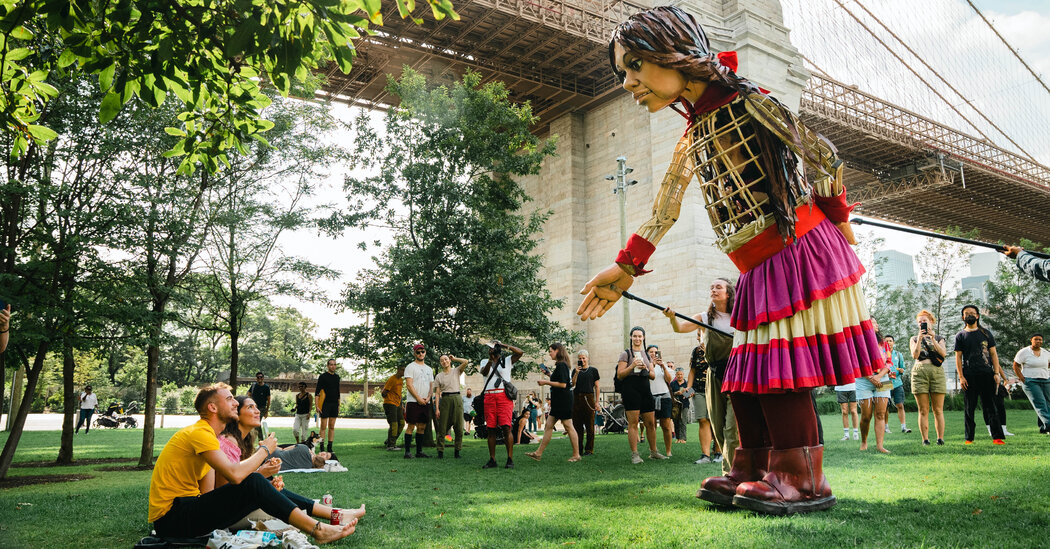A 10-Year-Old Refugee Has Met a Million People. How Will New York Welcome Her?

Little Amal, a 10-year-old Syrian girl, left the Syrian-Turkish border in July 2021. She journeyed throughout Europe and met a million people on her quest to find safety and a better life. She was unaccompanied, like so many other refugee children who have lost their parents. She is also a 12-foot-tall puppet.
Too often refugees are forgotten when international attention and resources shift to newer conflicts. Little Amal represents all of the children who have had to leave their home in search of safety. She forces us to see that their plight demands our attention.
We wanted Little Amal to appear human, even given her size. When we approached the Handspring Puppet Company of South Africa in November 2018, we asked it to build a child that would be larger than life and animated by people who are visible. The idea was to change how refugees and migrants are perceived by encouraging people to stop and really see them.
When we started, we asked artists, arts organizations and communities, as well as civic and faith leaders, this question: A refugee child will arrive in your city. She will be tired, hungry, frightened, in need of care. How will you welcome her?
As she walked through cities, towns and villages, we were surprised to discover that Little Amal has not just vulnerability, but power. Amal and those who animate her nightly sought out places of safety where she could rest, often in the company of friends she met along the walk. We were delighted to see how hopeful she made others feel. We found that people were curious about her and some even became emotionally attached to her.
We at first imagined that when we had completed Amal’s journey in Britain, we would go back to our lives making a more ordinary kind of theater. But as we traveled, we felt we needed to continue sharing her story — and what she represents — with people around the world. We decided that the first stop on the new leg of Amal’s journey would be New York, a city that looms so large as the gateway to opportunity.
New York is built on the movement of people through choice, through force and through displacement. These are the ingredients of America and its story. It is the story of what happens when people from all over the world come together to create something new.
It’s the promise of that story, at least.
New York City is a symbol of what could be possible if we embraced one another’s differences. We could reach higher, be bigger, be the best, be audacious.
This is what Amal hopes to find when she arrives in the city on Wednesday.
For me, what Amal brings to New York — its communities, institutions, artists and children — is a beautiful mixture of sensitivity and resistance. Or, more precisely, resilience through vulnerability. She invites us to remember the big idea on which the city was built. And what the city still aspires to.
The refugees whom Amal represents are some of the world’s most skillful problem solvers. They figure out every day how to survive. Their ability to create solutions out of nothing should be celebrated.
Little Amal is a song of praise for the survivor, the people full of hope, the dreamers. The people who in the most dire circumstances struggle to build a better life.
“Amal” means hope in Arabic. I don’t yet know if Amal will find safety or a better life in New York, or in any part of the United States or in Europe. But she invites us to come together — to celebrate the hope that nestles between vulnerability and resistance.
Amir Nizar Zuabi, a playwright and director, is the artistic director of the Walk Productions.
The Times is committed to publishing a diversity of letters to the editor. We’d like to hear what you think about this or any of our articles. Here are some tips. And here’s our email: [email protected].
Follow The New York Times Opinion section on Facebook, Twitter (@NYTopinion) and Instagram.
